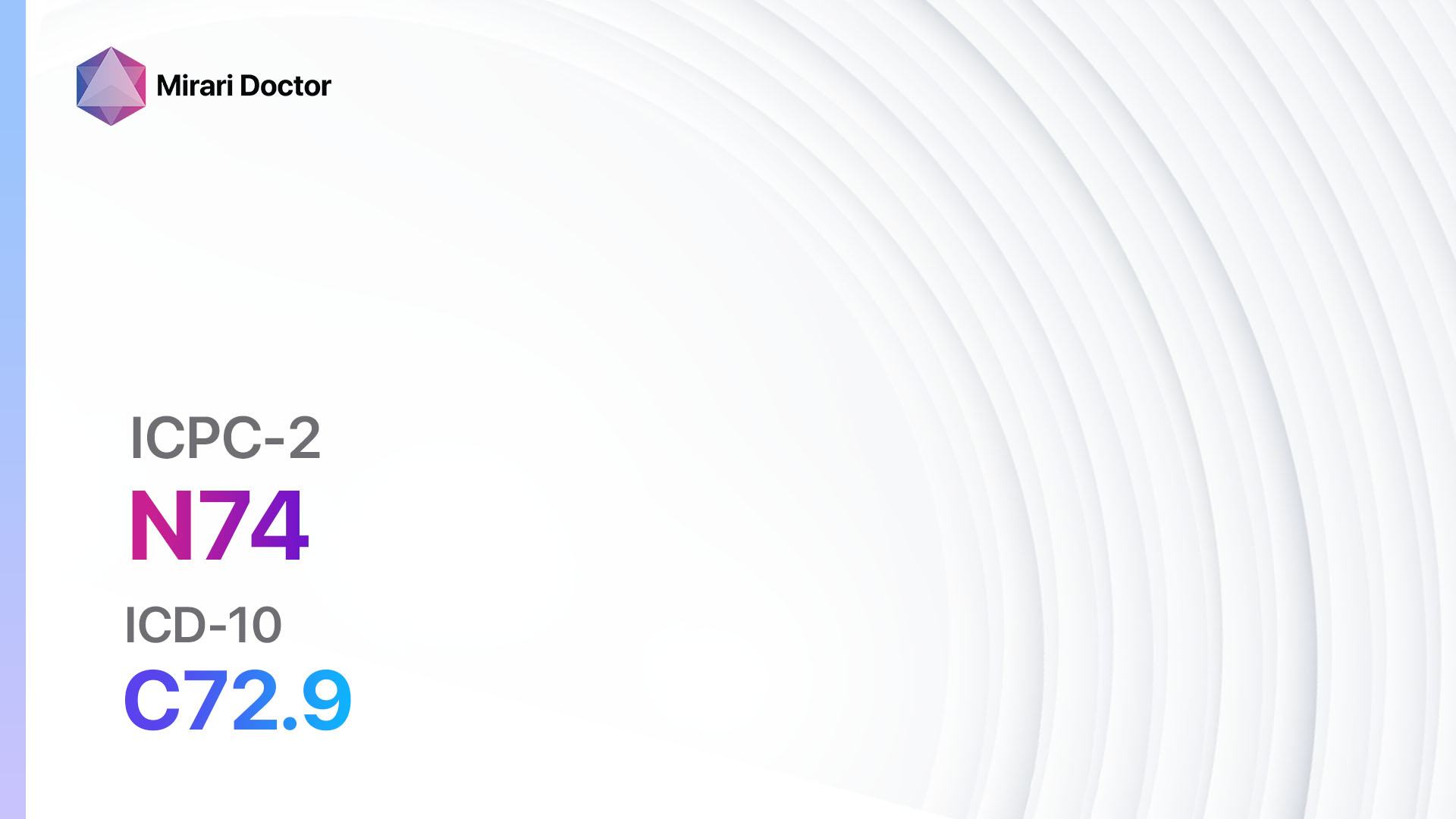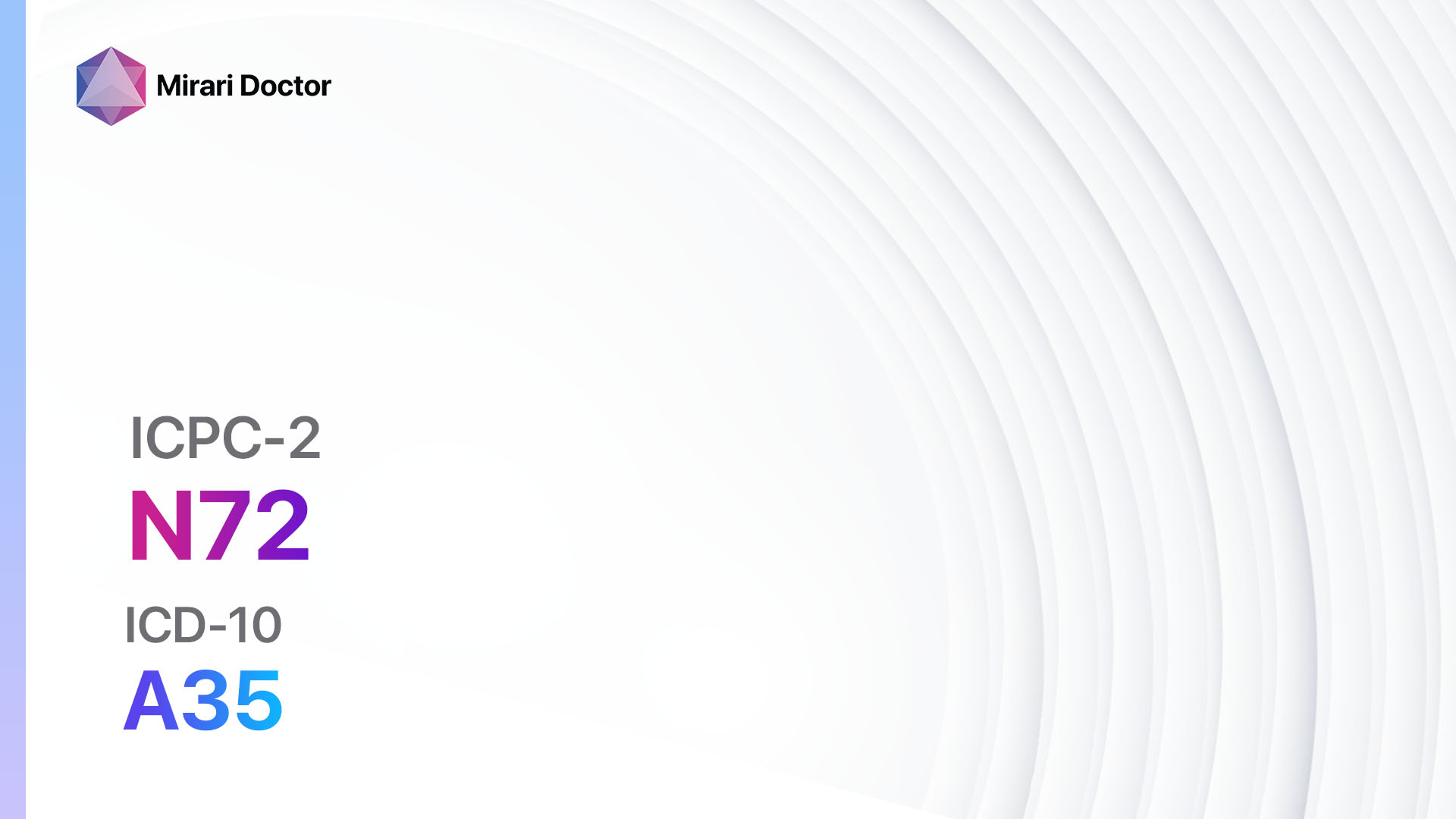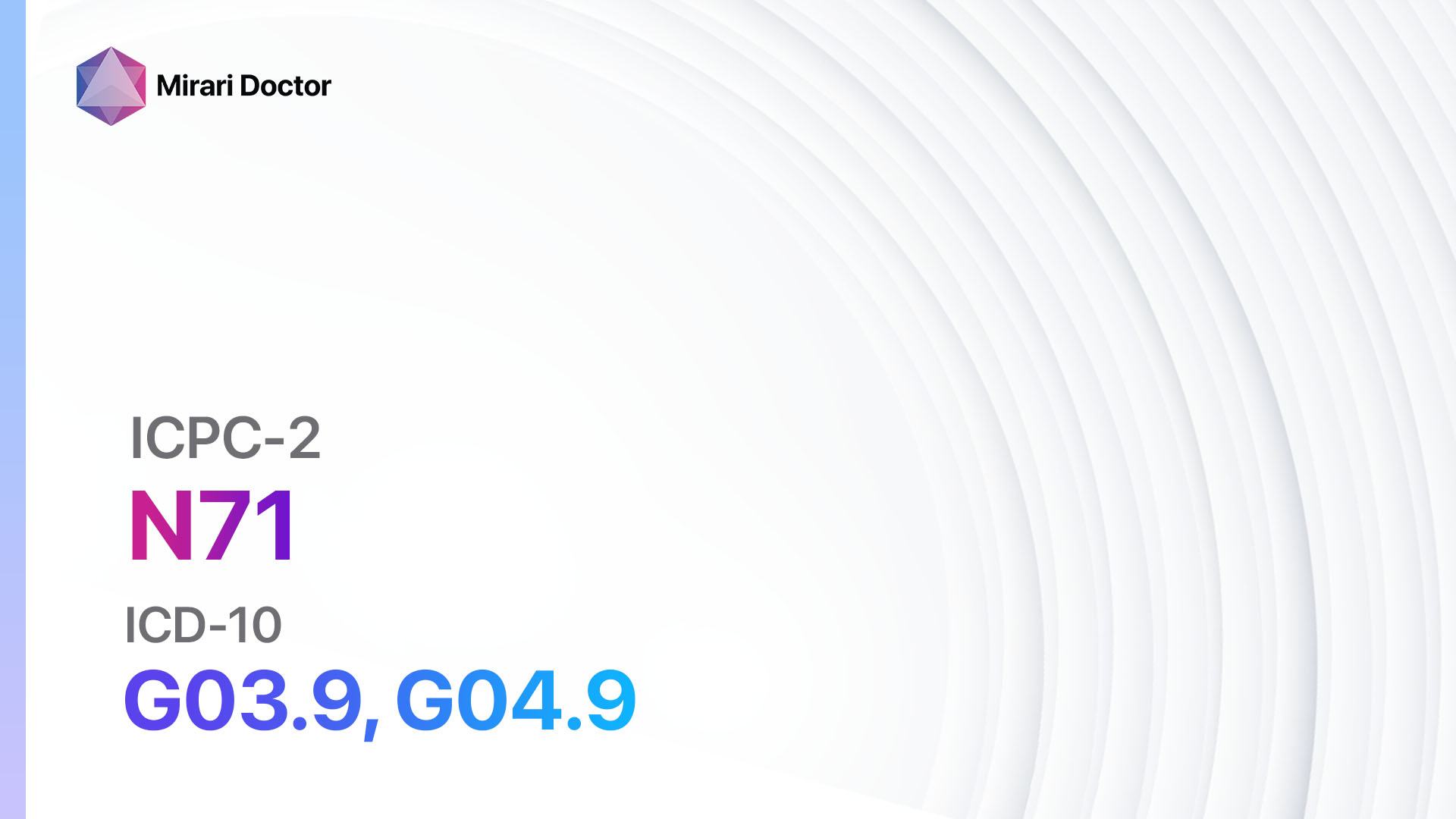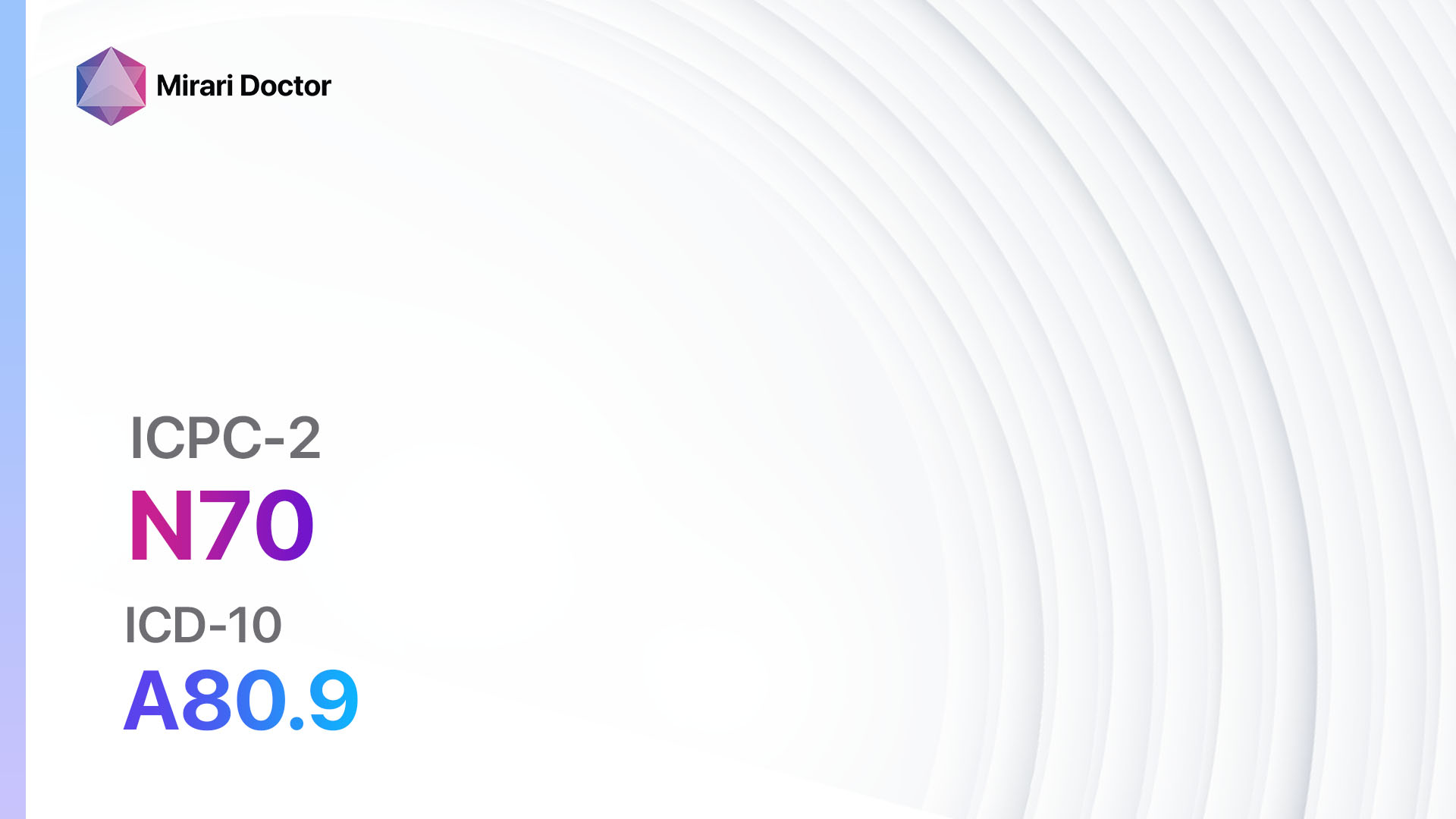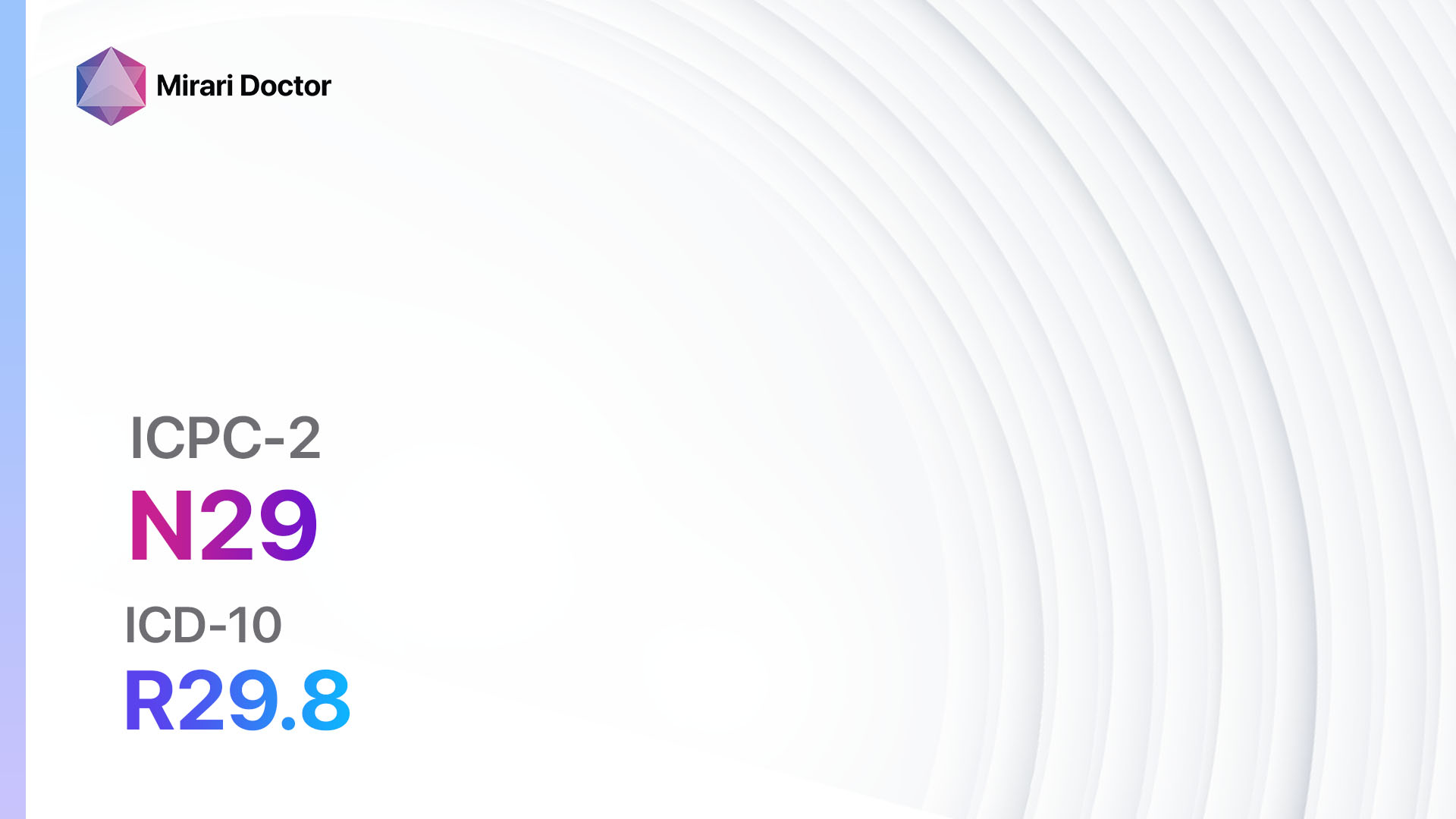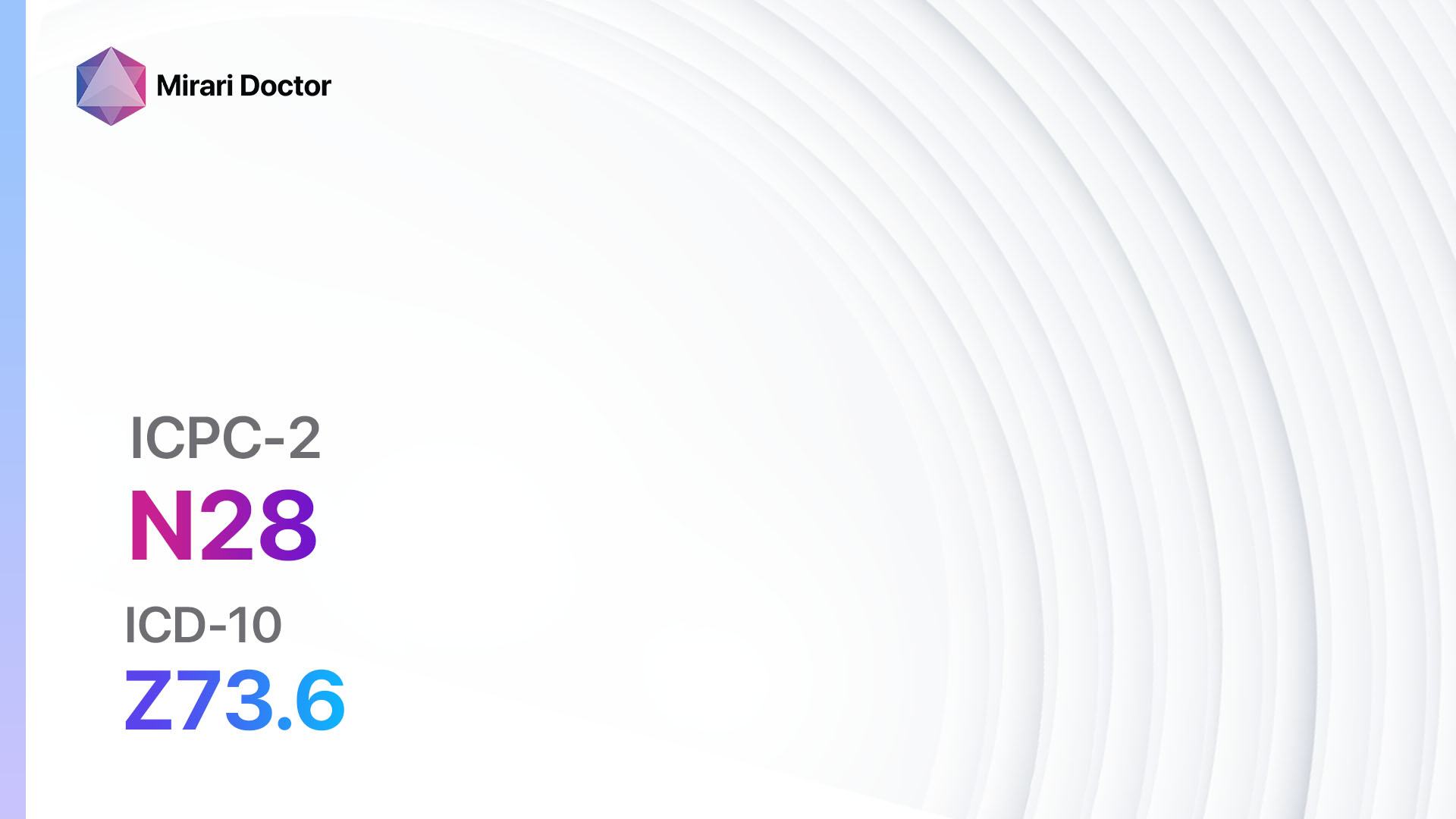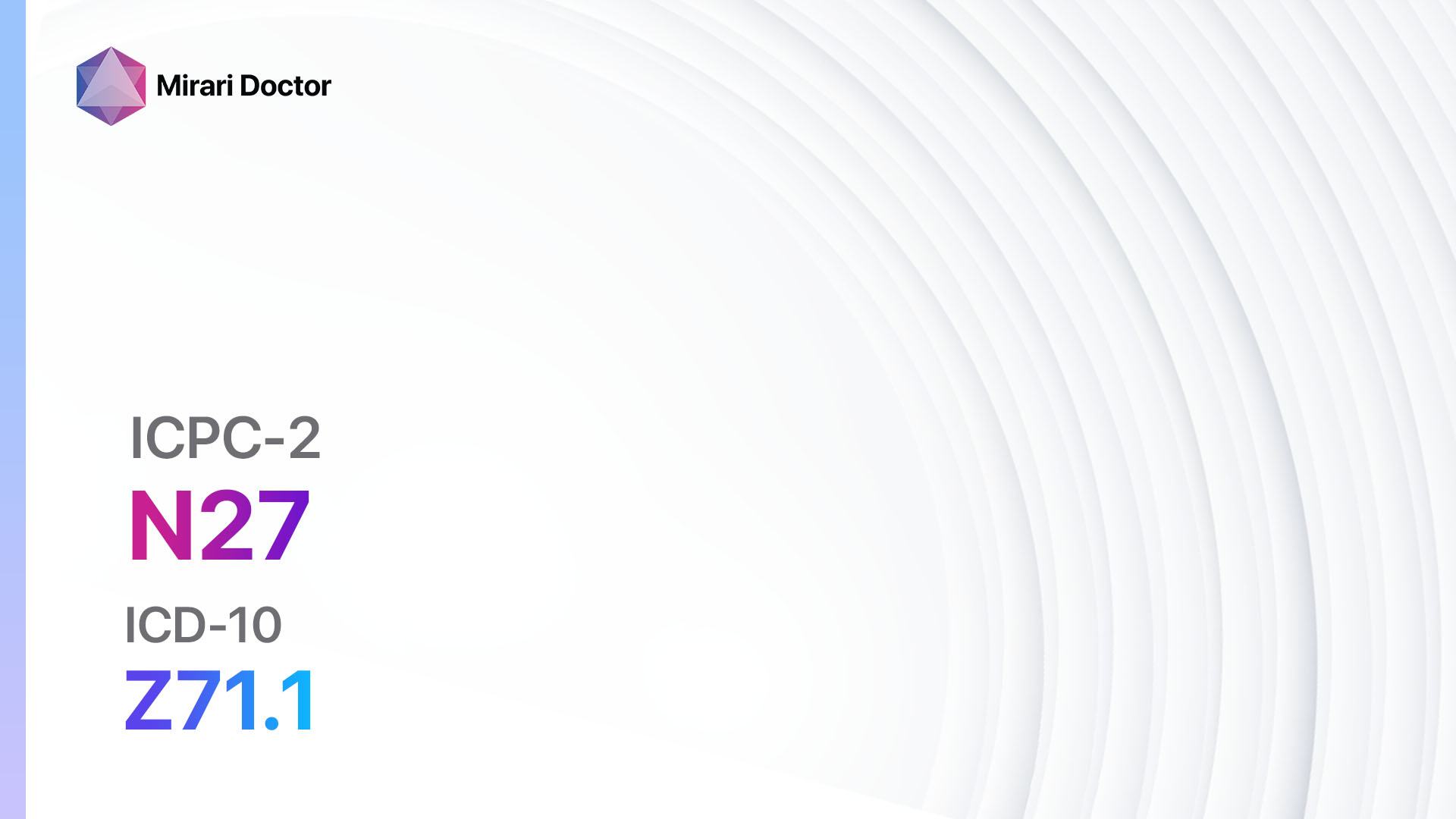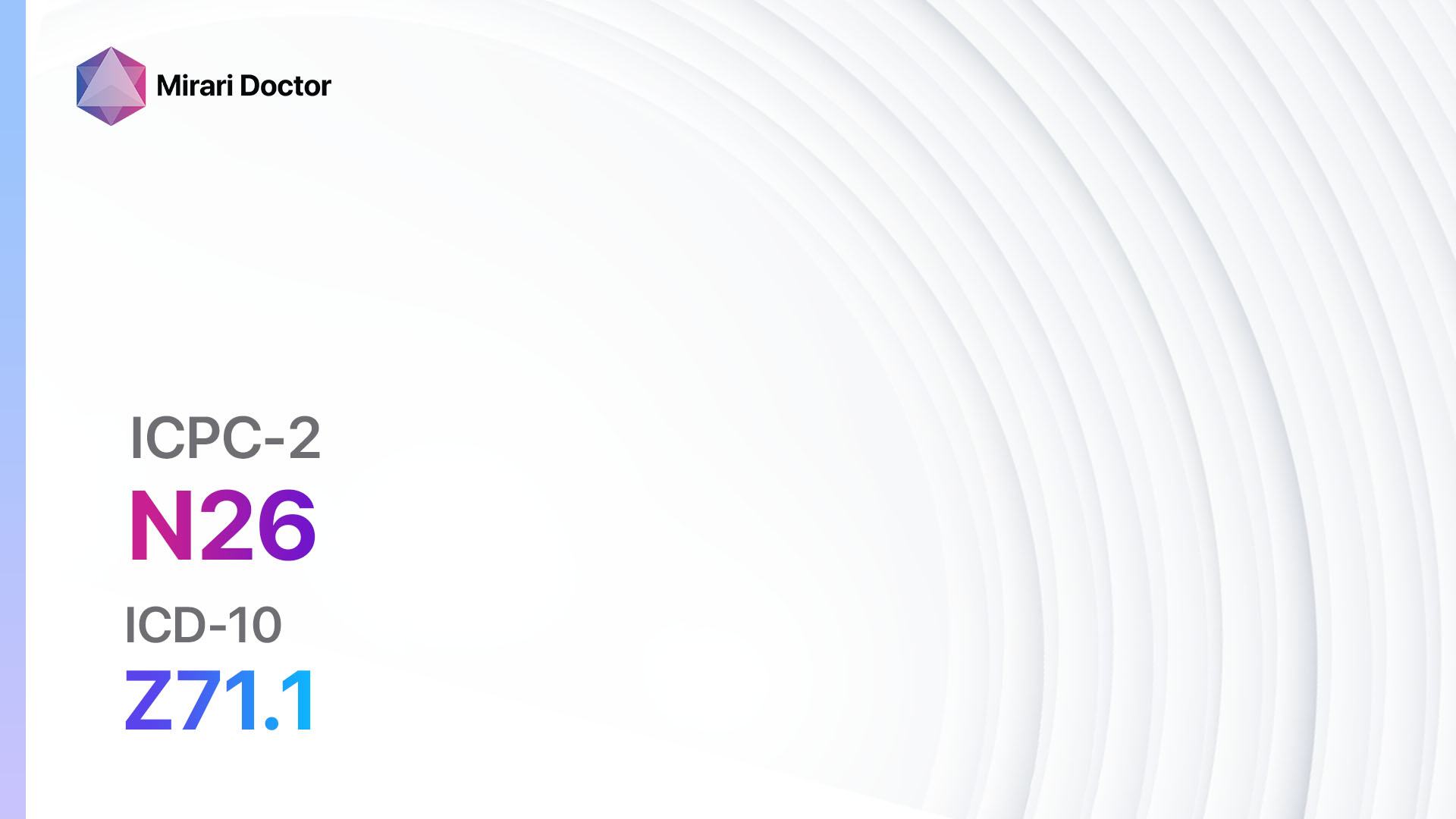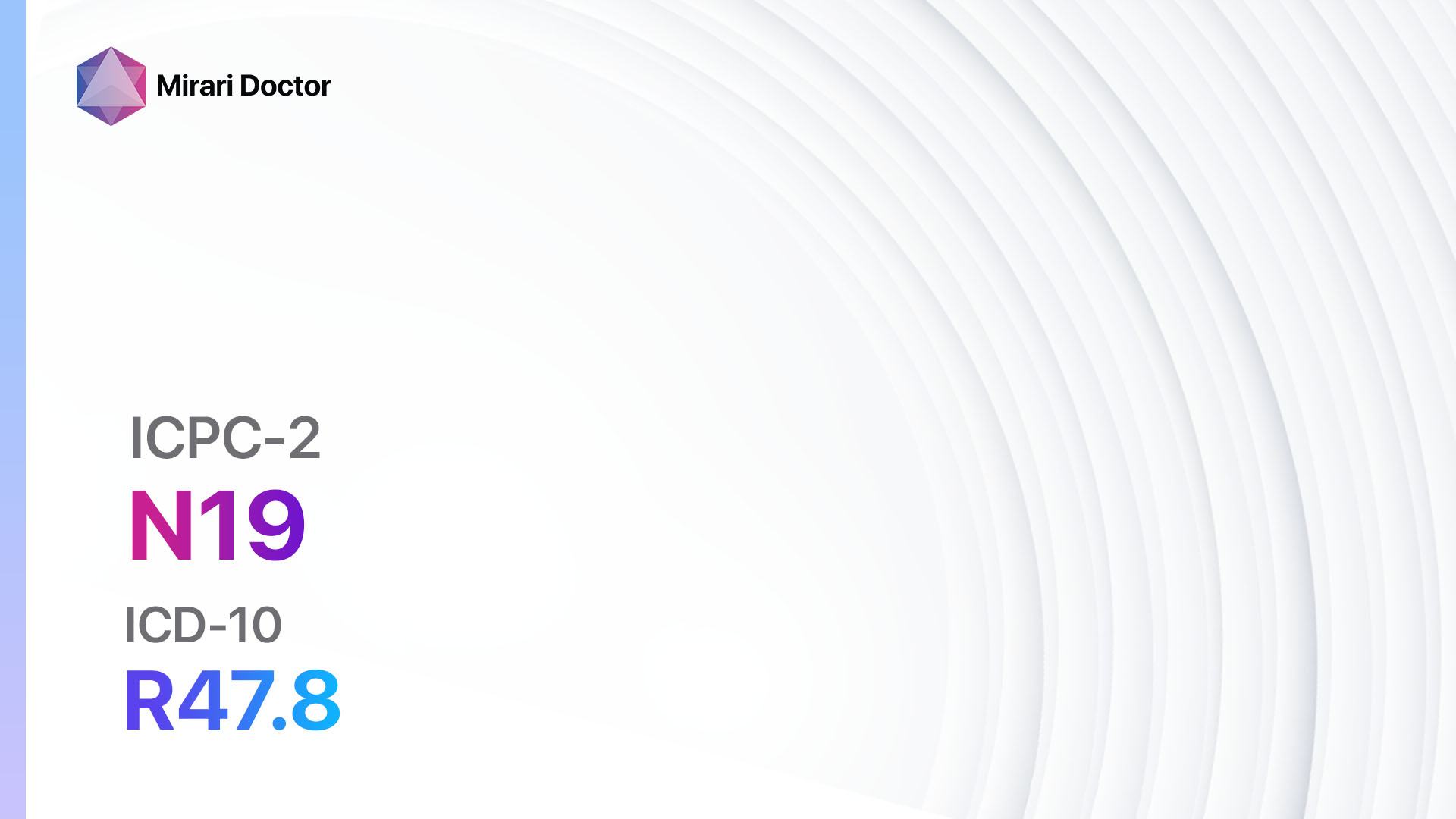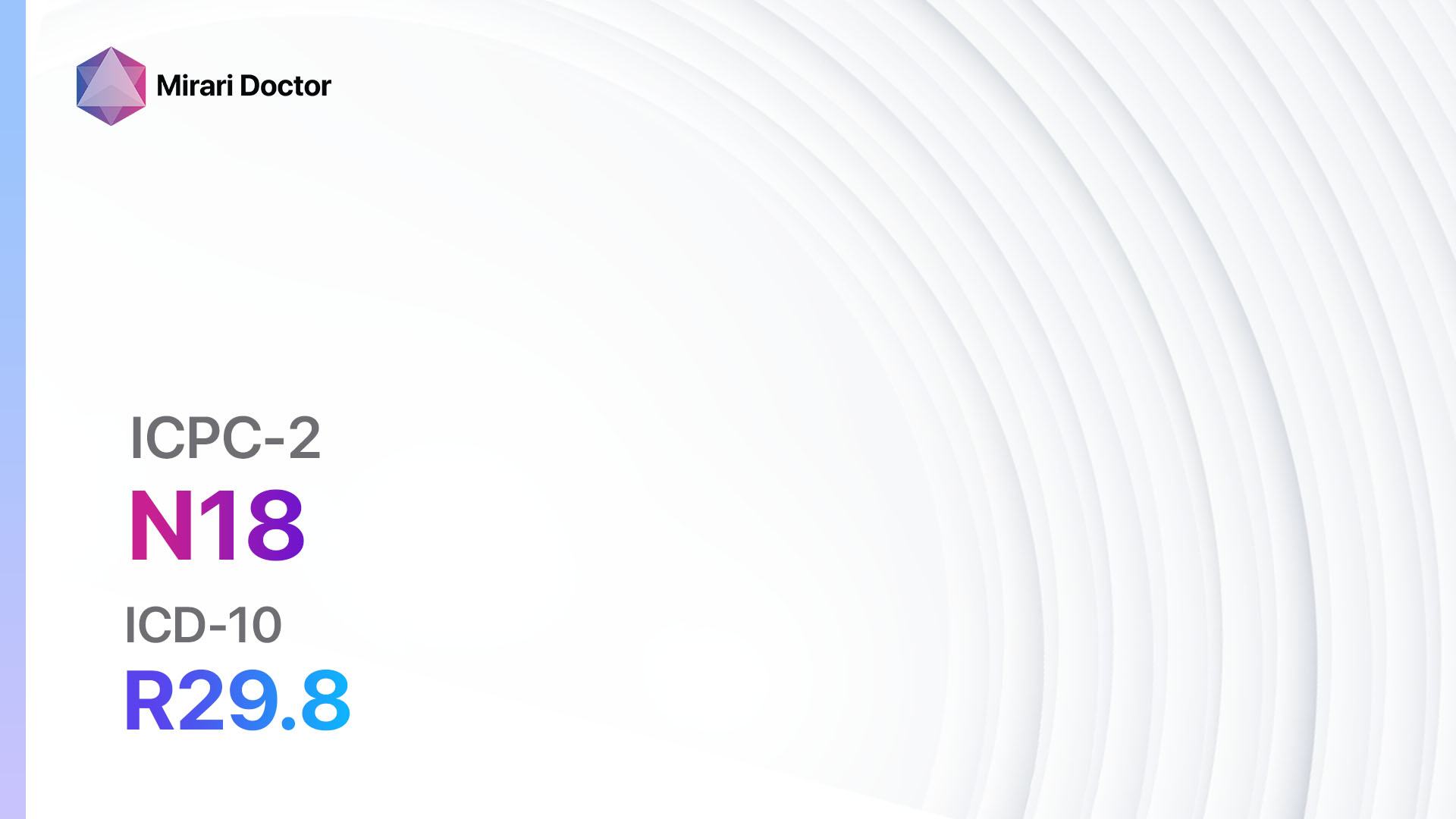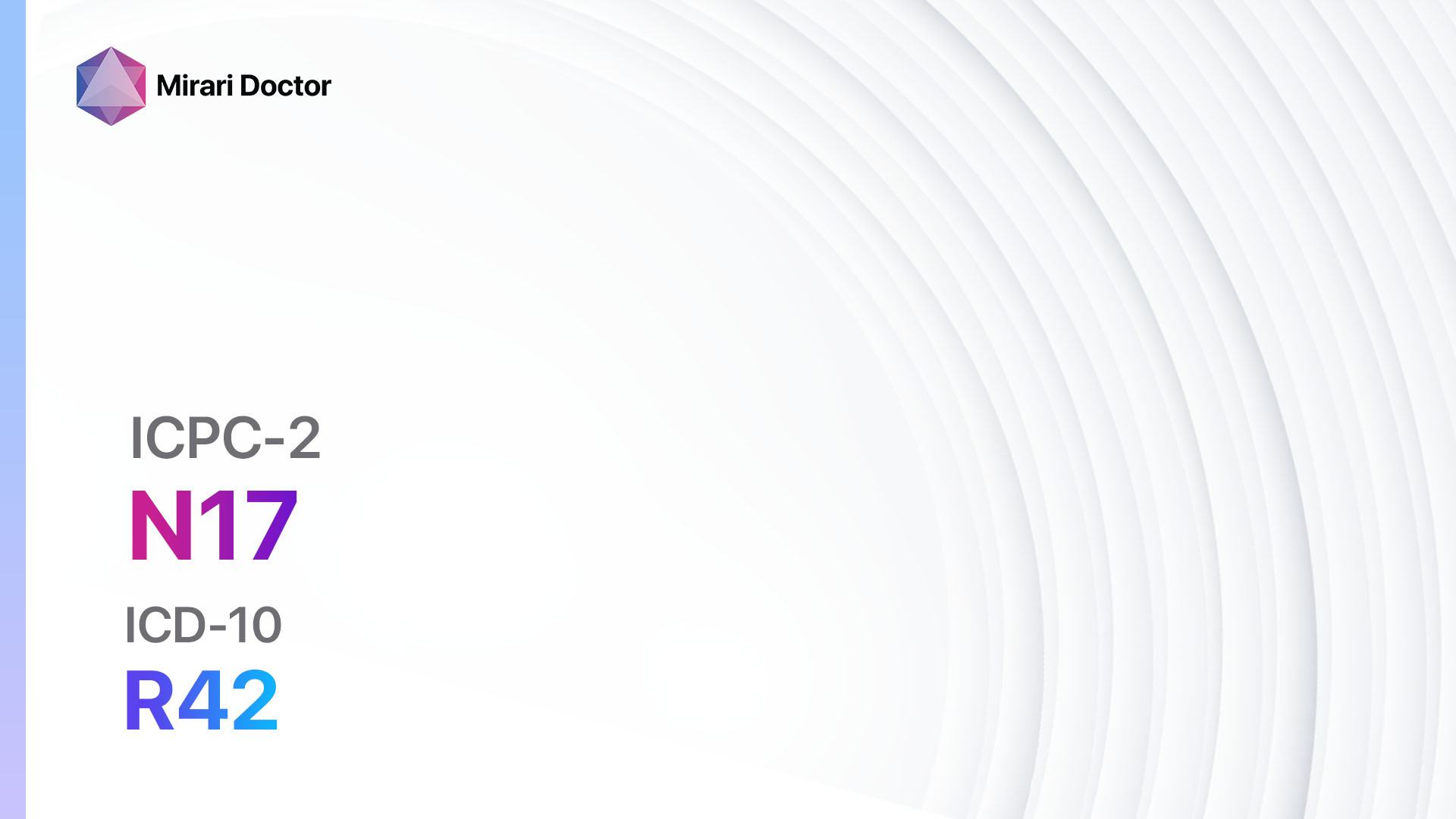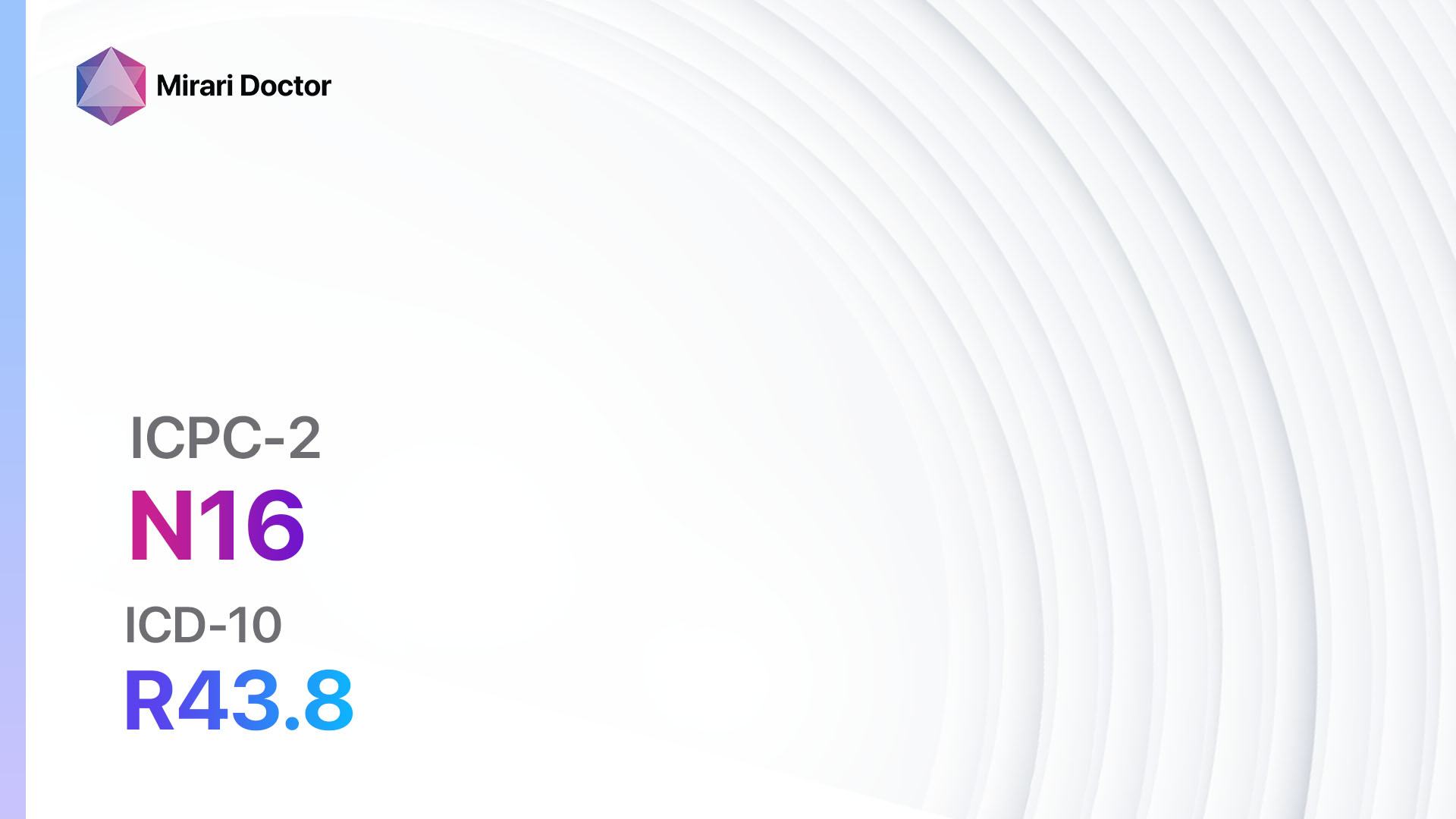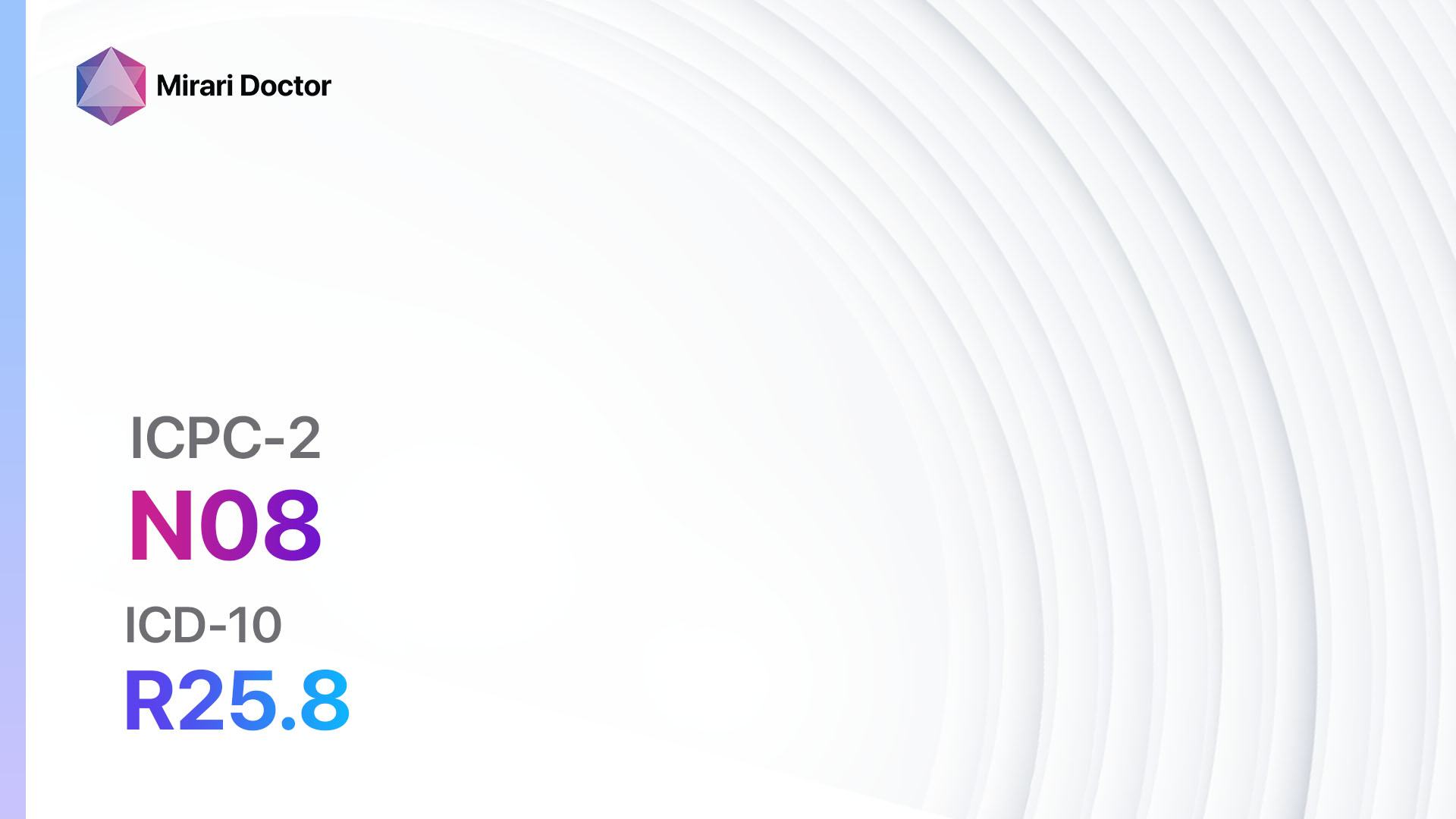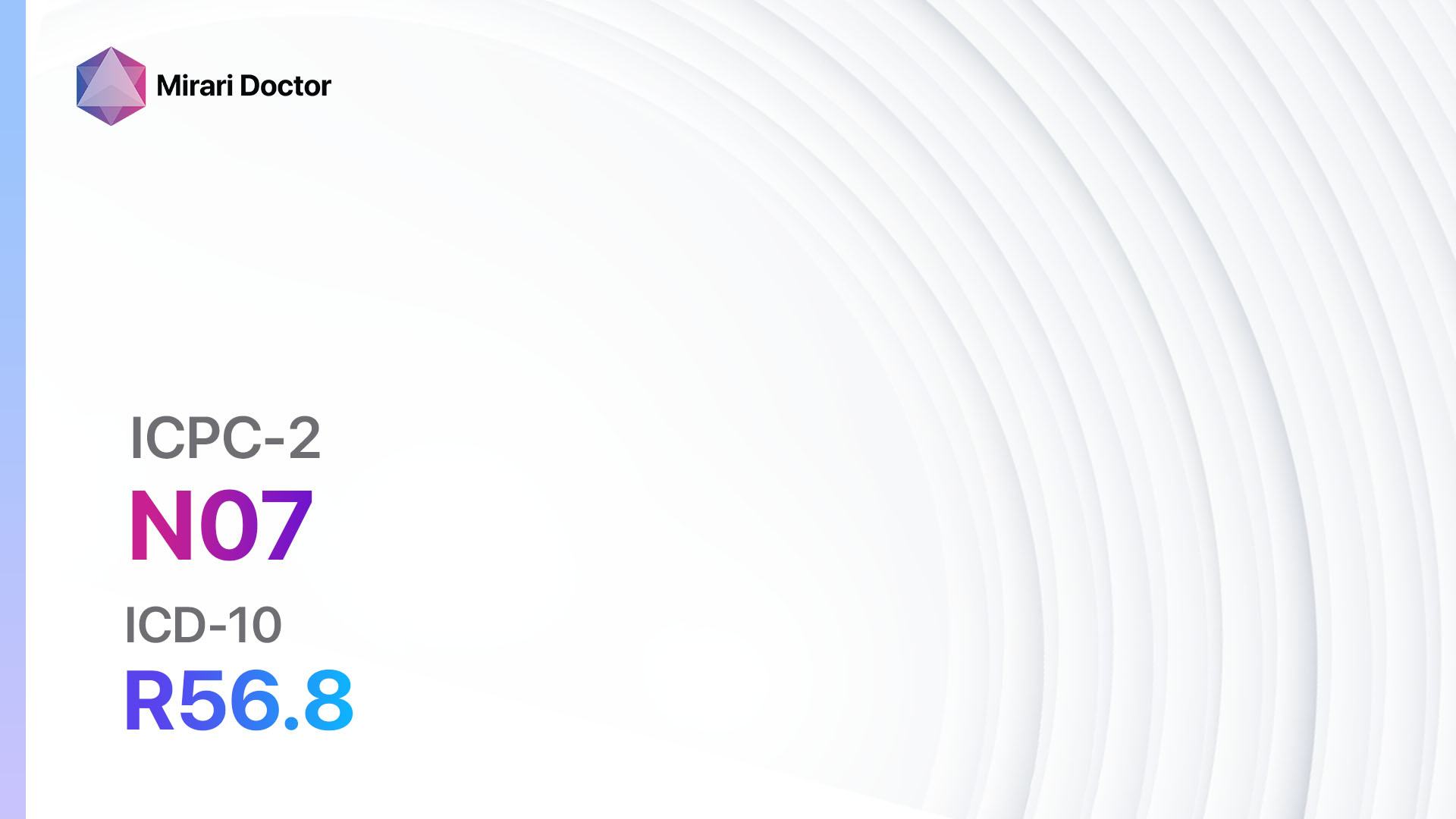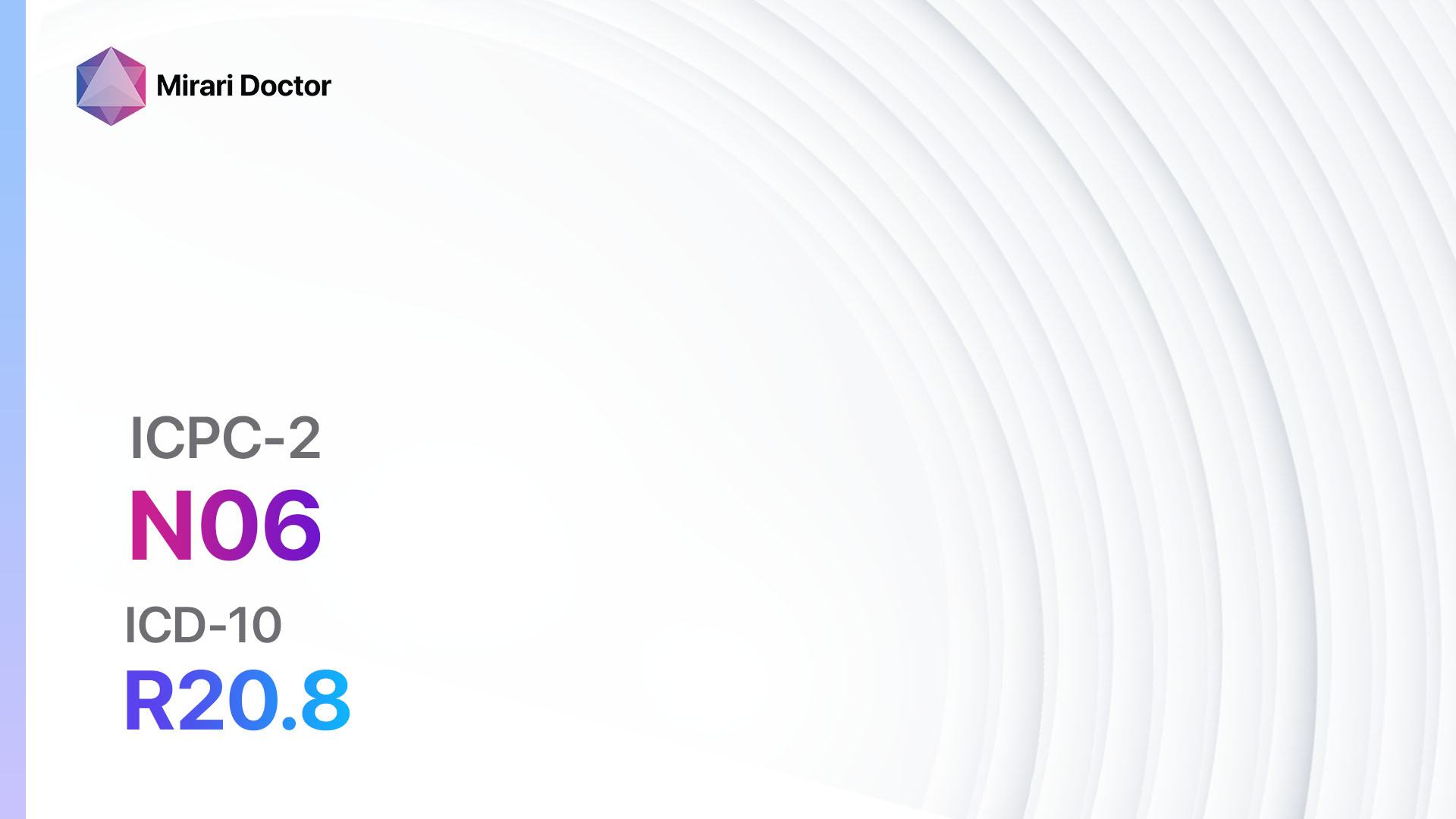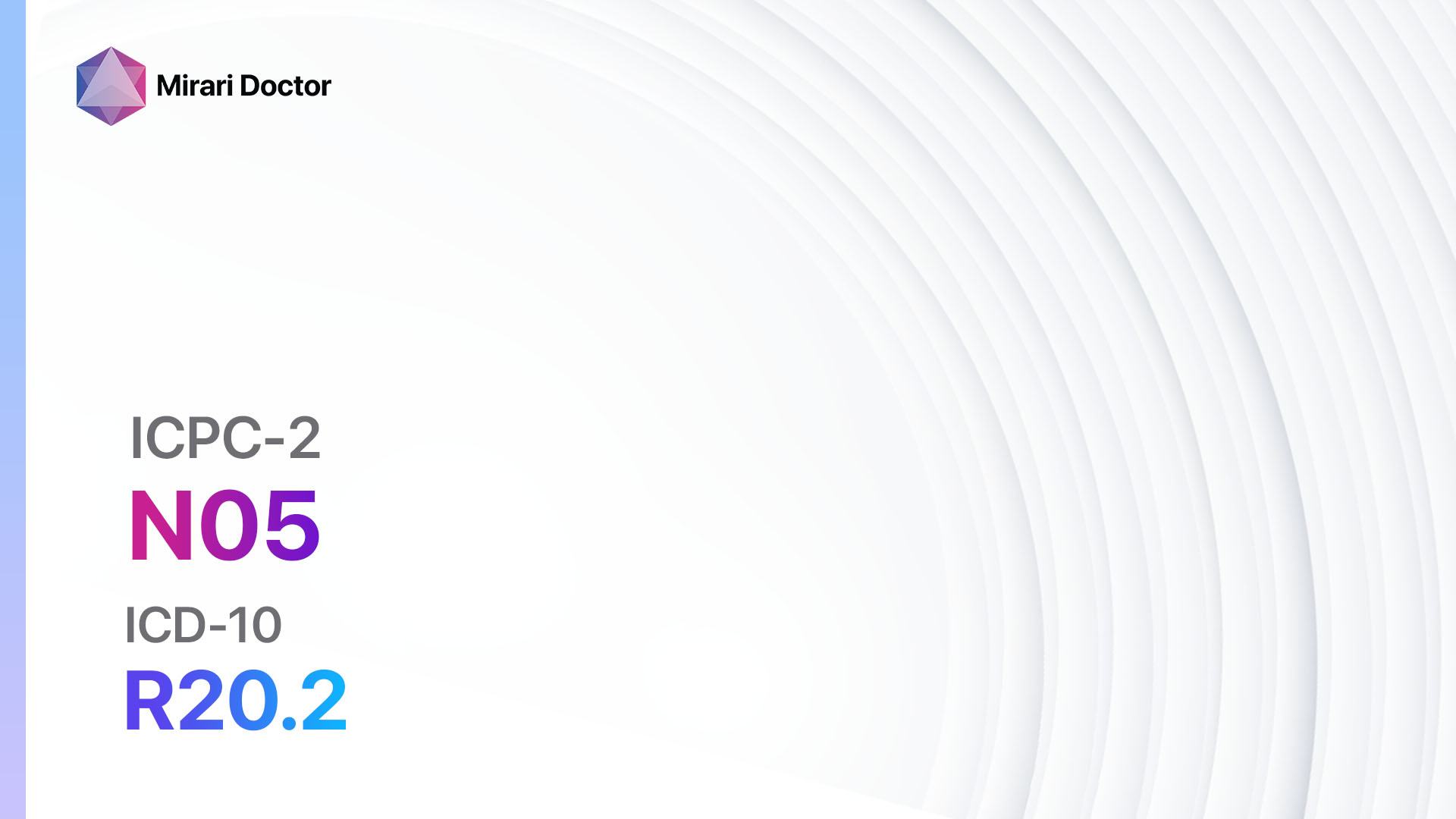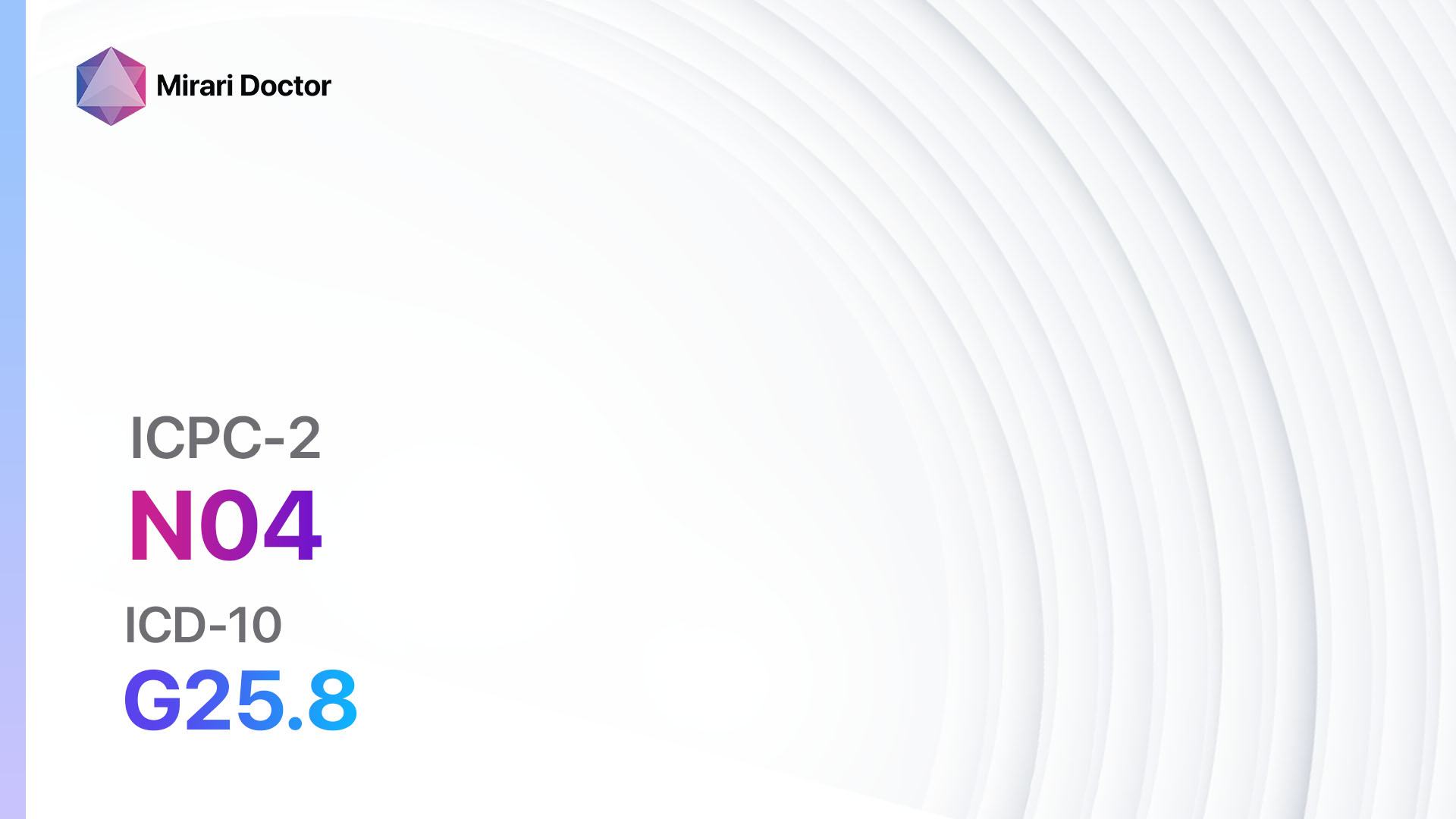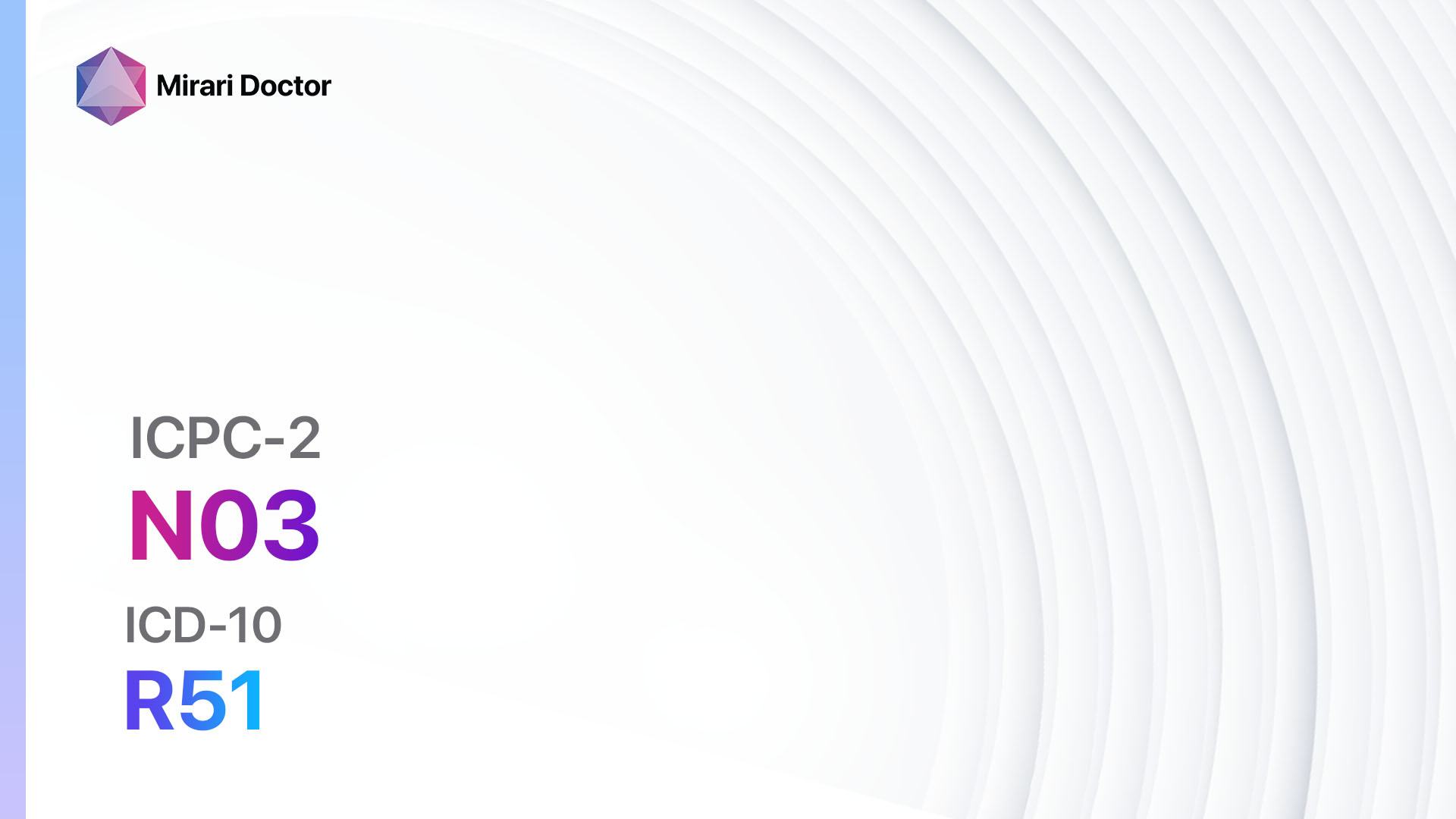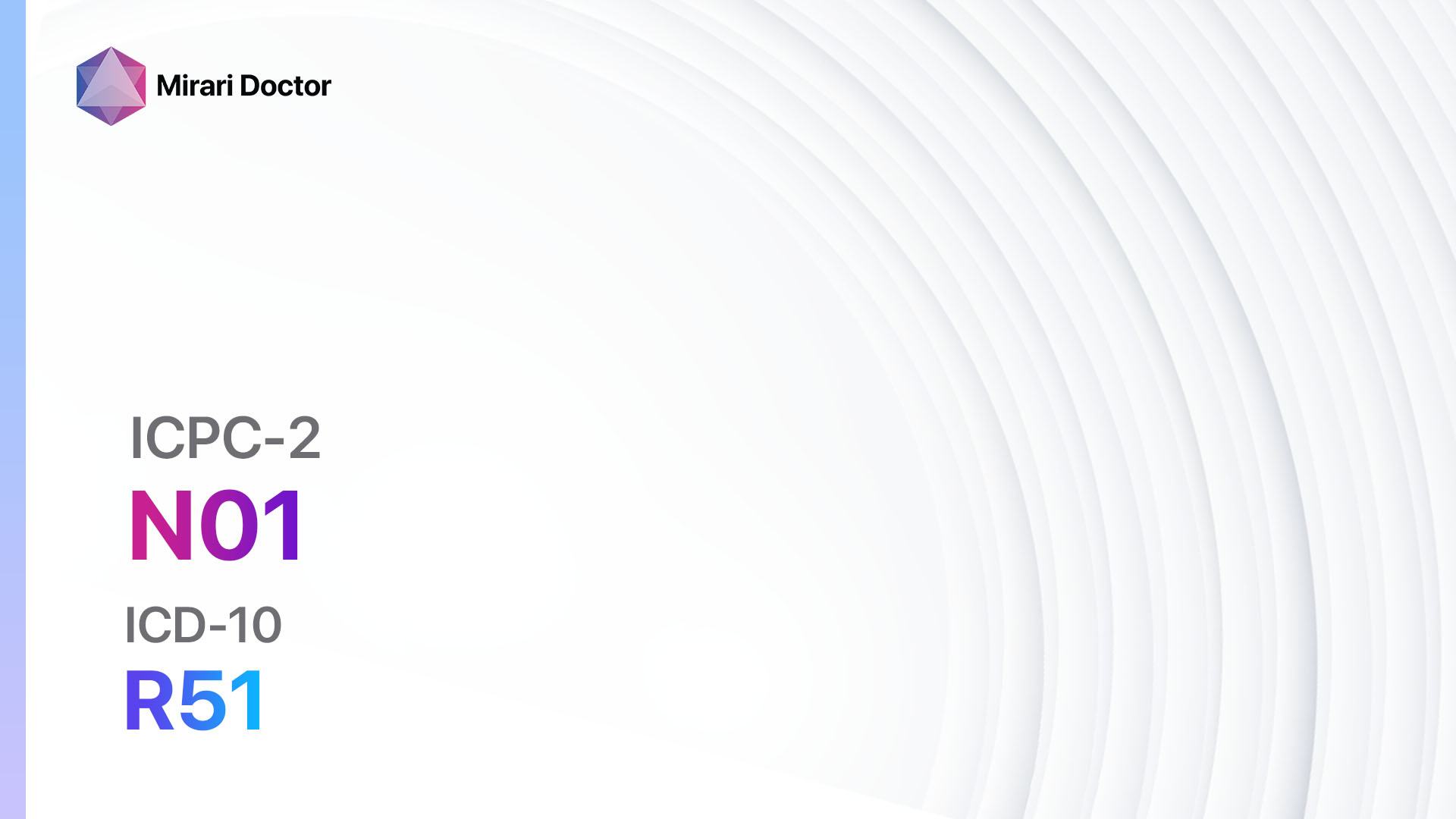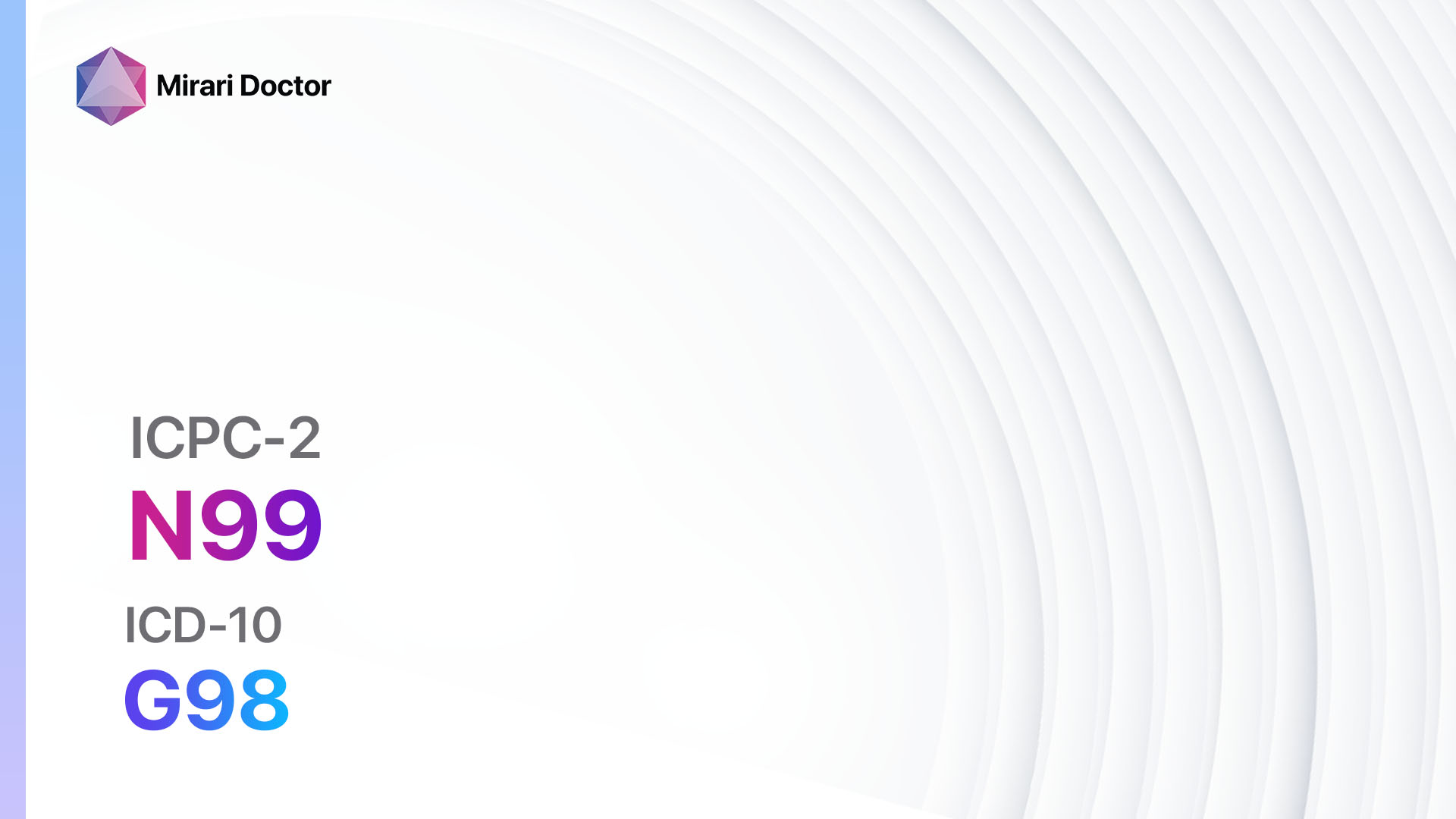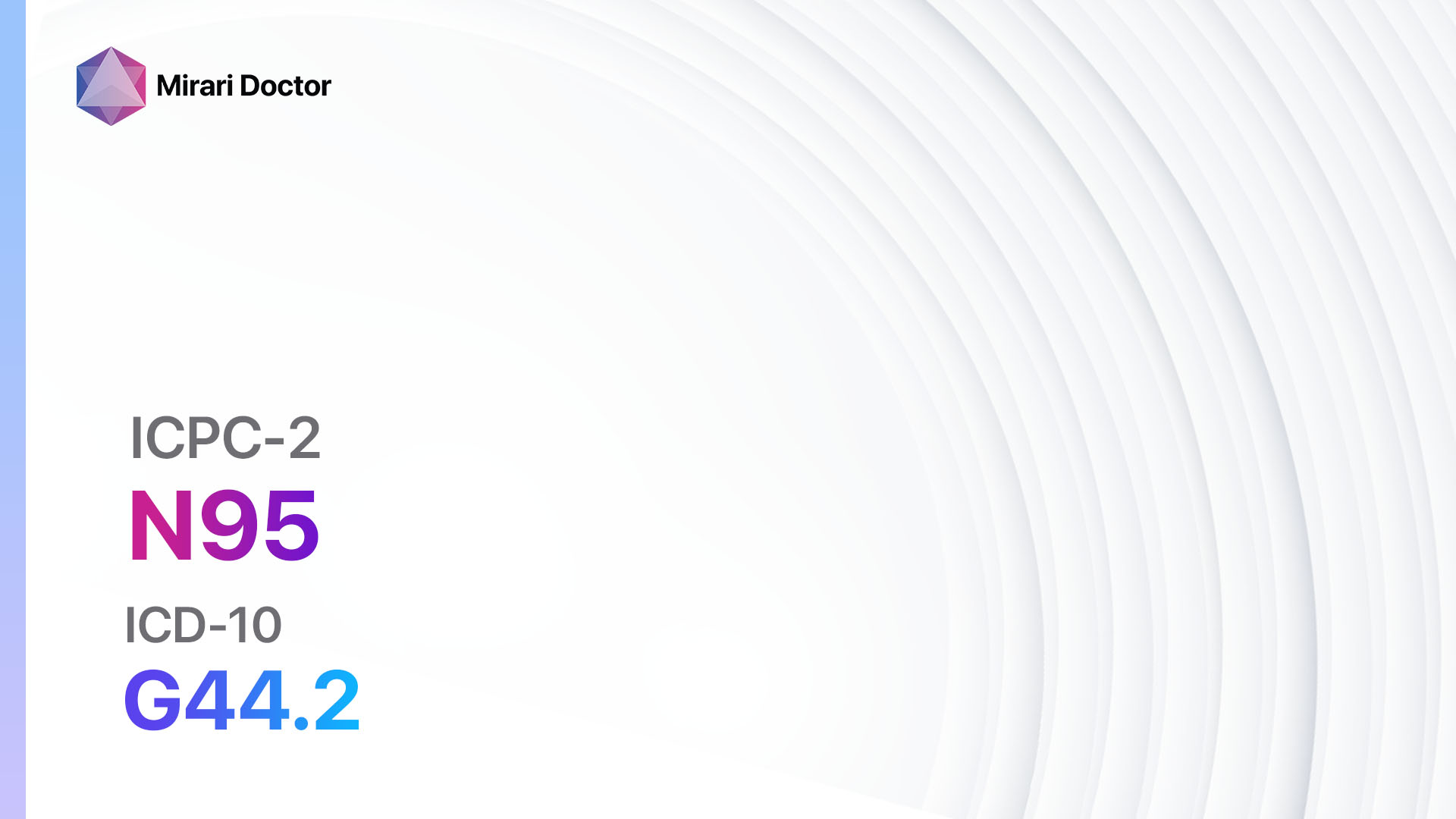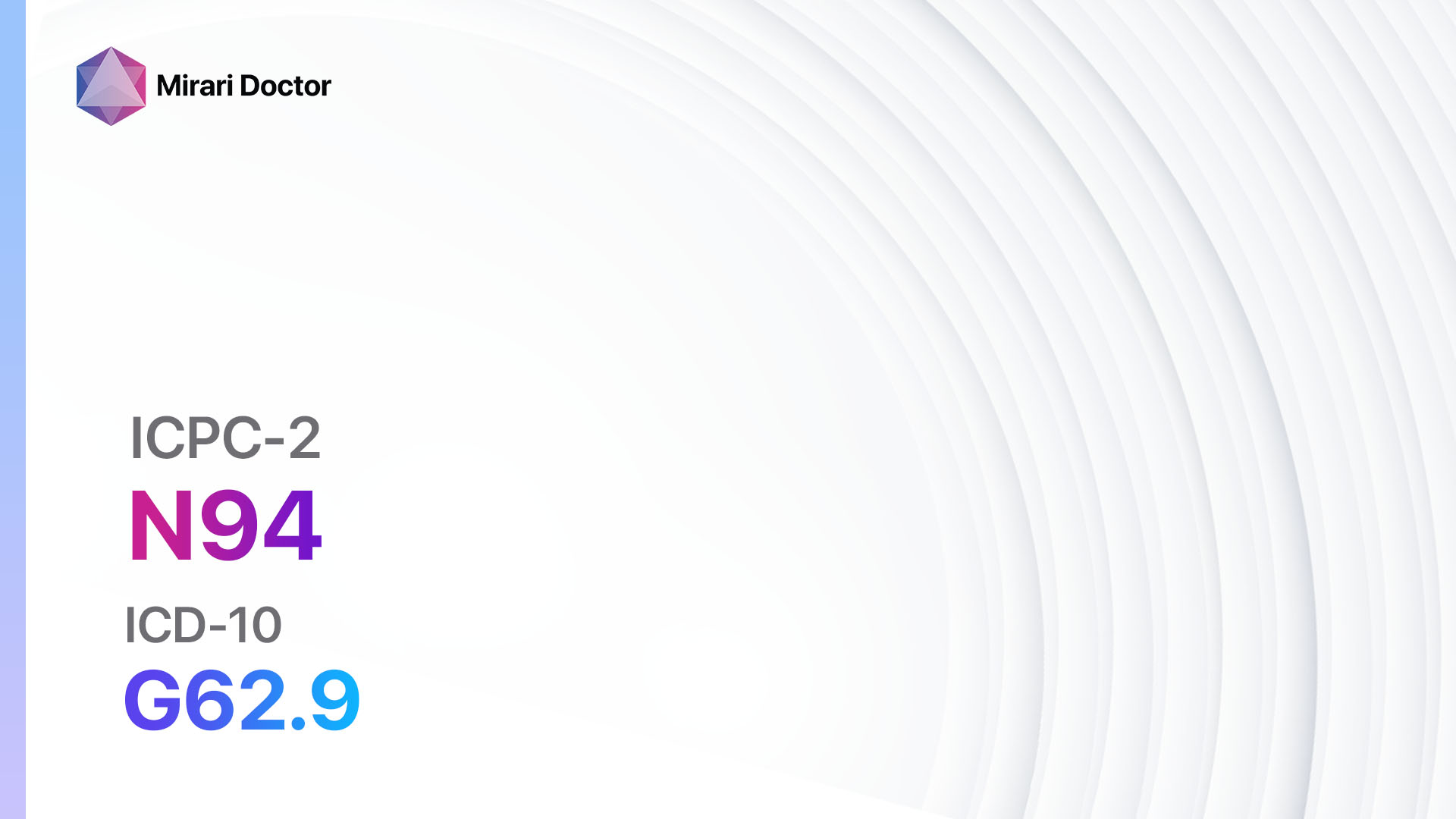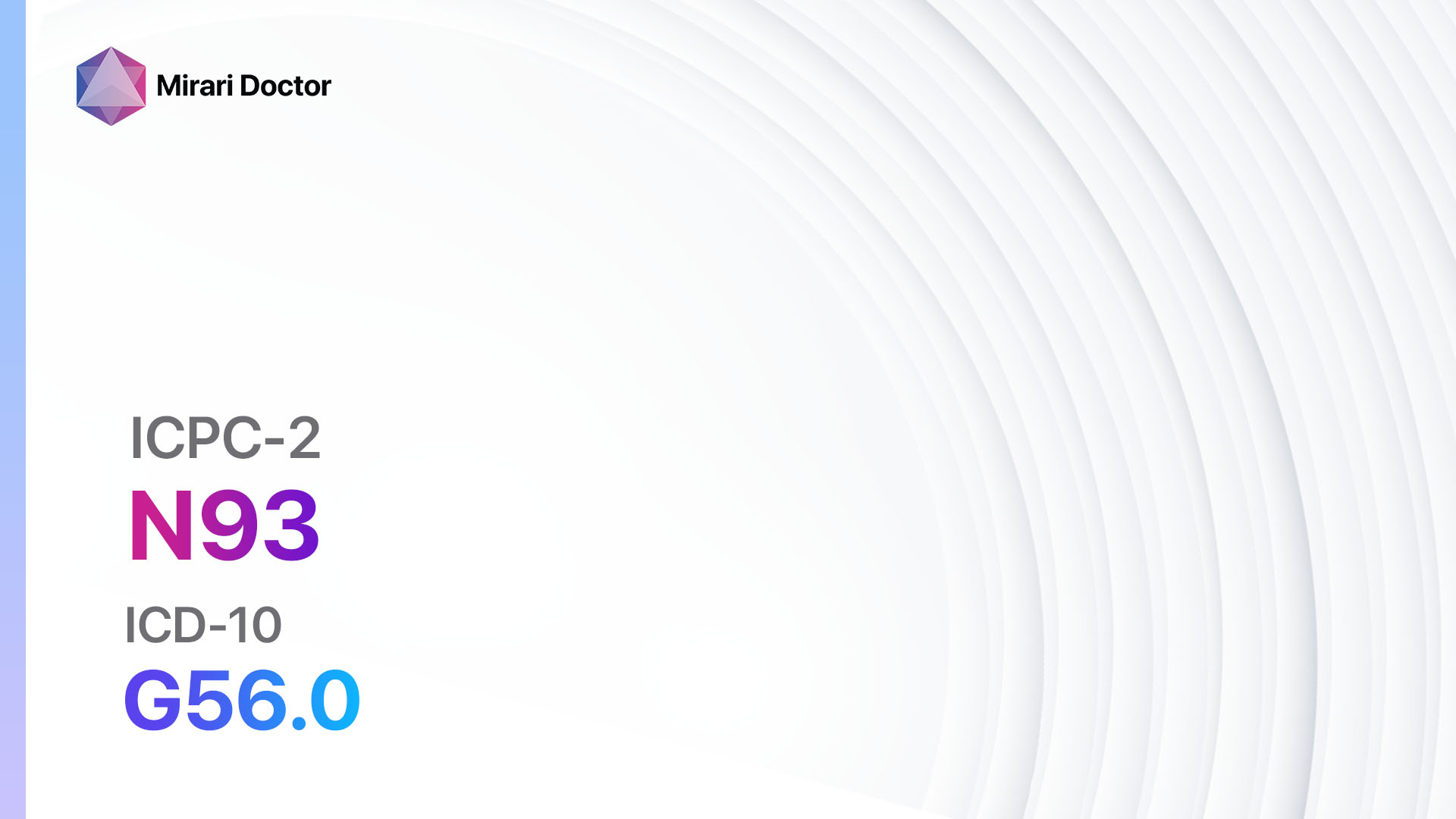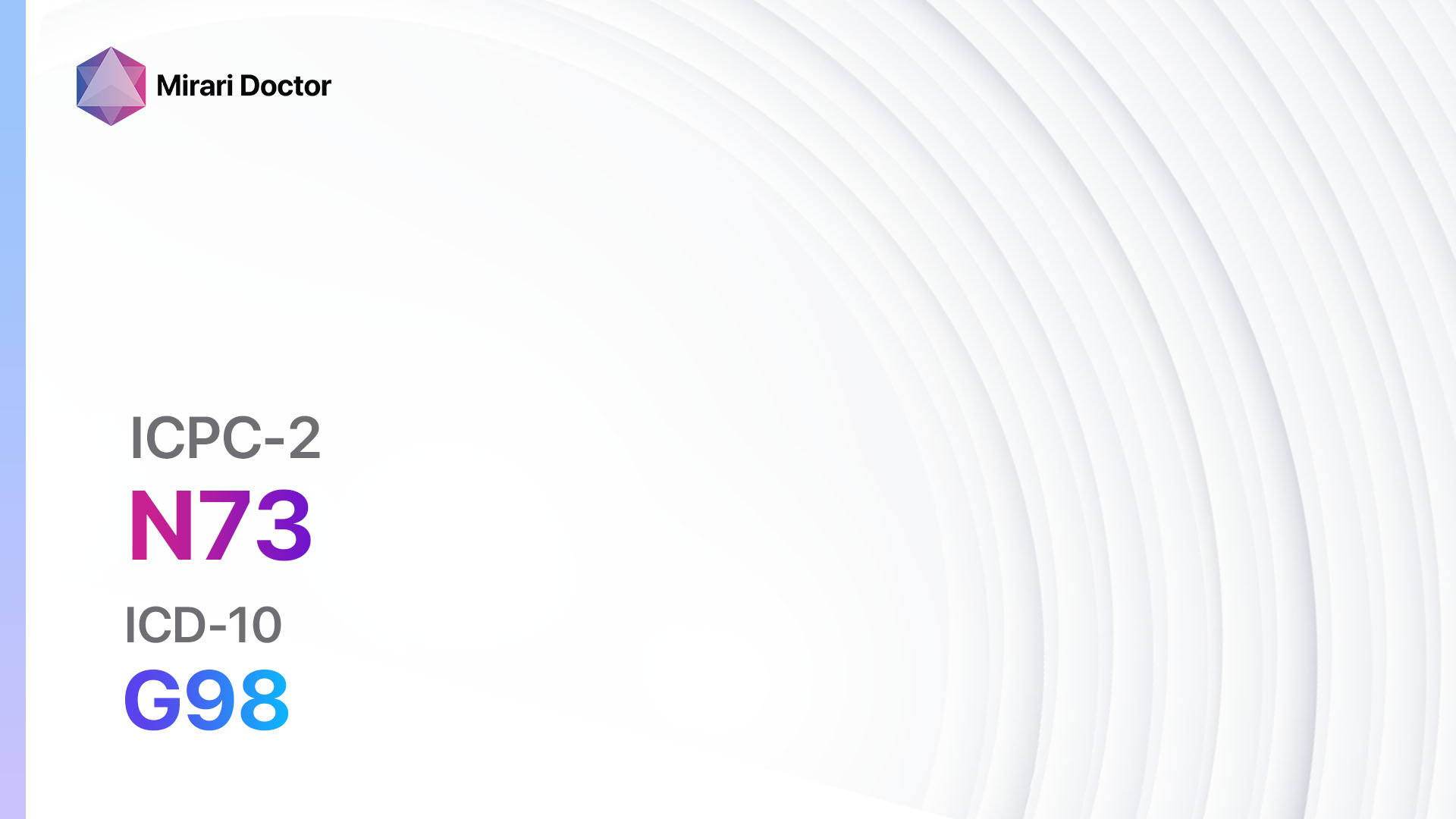
Introduction
Neurological infections are conditions that involve the invasion of the nervous system by infectious agents such as bacteria, viruses, fungi, or parasites[1]. These infections can affect various parts of the nervous system, including the brain, spinal cord, and peripheral nerves[2]. Neurological infections can cause a wide range of symptoms and can be life-threatening if not promptly diagnosed and treated[3]. The aim of this guide is to provide healthcare professionals with a comprehensive overview of the diagnostic steps and possible interventions for neurological infections other than meningitis or encephalitis.
Codes
- ICPC-2 Code: N73 Neurological infection other
- ICD-10 Code: G98 Other disorders of nervous system, not elsewhere classified
Symptoms
- Fever: Neurological infections can often cause a high fever, which may be persistent or intermittent.
- Headache: Headaches are a common symptom of neurological infections and can range from mild to severe.
- Neck stiffness: Stiffness in the neck, also known as nuchal rigidity, may be present in some cases.
- Altered mental status: Neurological infections can cause confusion, disorientation, or changes in consciousness.
- Seizures: Seizures may occur in some cases of neurological infections.
- Sensory changes: Patients may experience numbness, tingling, or other abnormal sensations.
- Motor deficits: Weakness, paralysis, or difficulty with coordination may be present.
- Visual changes: Blurred vision, double vision, or other visual disturbances may occur.
- Speech difficulties: Neurological infections can affect speech and language abilities.
- Behavioral changes: Patients may exhibit changes in behavior, mood, or personality[4].
Causes
- Bacterial infections: Bacterial infections such as Lyme disease, tuberculosis, or syphilis can cause neurological infections.
- Viral infections: Viruses such as herpes simplex virus, varicella-zoster virus, or human immunodeficiency virus (HIV) can invade the nervous system.
- Fungal infections: Fungal infections such as cryptococcal meningitis or histoplasmosis can affect the nervous system.
- Parasitic infections: Parasites such as Toxoplasma gondii or Trypanosoma cruzi can cause neurological infections.
- Non-infectious causes: In some cases, neurological infections may be caused by non-infectious factors such as autoimmune disorders or certain medications[5].
Diagnostic Steps
Medical History
- Obtain a detailed medical history, including information about the onset and progression of symptoms, previous infections, recent travel, exposure to animals, and any underlying medical conditions.
- Inquire about specific symptoms associated with neurological infections, such as fever, headache, neck stiffness, seizures, or changes in mental status.
- Assess for risk factors for certain infections, such as a history of tick bites for Lyme disease or exposure to contaminated water for parasitic infections.
Physical Examination
- Perform a thorough physical examination, including a neurological assessment to evaluate motor strength, coordination, reflexes, and sensory function.
- Look for signs of infection, such as fever, swollen lymph nodes, or skin rash.
- Assess for specific neurological signs, such as nuchal rigidity, abnormal eye movements, or focal neurological deficits.
Laboratory Tests
- Complete blood count (CBC): A CBC can help identify signs of infection, such as an elevated white blood cell count.
- Blood cultures: Blood cultures may be performed to identify the presence of bacteria in the bloodstream.
- Lumbar puncture (spinal tap): A lumbar puncture may be necessary to obtain cerebrospinal fluid (CSF) for analysis, including cell count, protein, glucose, and culture.
- Serological tests: Serological tests can detect the presence of antibodies against specific infectious agents, such as viruses or parasites.
- Polymerase chain reaction (PCR): PCR testing can detect the genetic material of infectious agents, providing rapid and accurate diagnosis.
- Imaging studies: Imaging modalities such as CT scans or MRIs may be used to visualize the brain and spinal cord and identify any abnormalities.
Diagnostic Imaging
- CT scan: A CT scan can provide detailed images of the brain and can help identify any structural abnormalities or signs of infection.
- MRI: An MRI can provide more detailed images of the brain and spinal cord, allowing for better visualization of infection-related changes.
- PET scan: In some cases, a PET scan may be used to assess metabolic activity in the brain and identify areas of infection or inflammation.
Other Tests
- Electroencephalogram (EEG): An EEG may be performed to evaluate brain wave patterns and detect any abnormal electrical activity.
- Nerve conduction studies: Nerve conduction studies can assess the function of peripheral nerves and identify any abnormalities.
- Biopsy: In certain cases, a biopsy of affected tissue may be necessary to confirm the presence of infection or rule out other causes.
Follow-up and Patient Education
- Follow-up appointments should be scheduled to monitor the patient’s progress and response to treatment.
- Provide education to the patient and their family about the nature of the infection, treatment options, and potential complications.
- Emphasize the importance of adherence to medication regimens and the need for regular follow-up appointments.
Possible Interventions
Traditional Interventions
Medications:
Top 5 drugs for Neurological infection other:
- Antibiotics (e.g., Ceftriaxone, Vancomycin, Amphotericin B):
- Cost: Varies depending on the specific medication and dosage.
- Contraindications: Allergy to the medication, severe renal impairment.
- Side effects: Nausea, vomiting, diarrhea, rash.
- Severe side effects: Allergic reactions, kidney damage, liver toxicity.
- Drug interactions: Other medications that may interact with antibiotics.
- Warning: Close monitoring of renal and hepatic function may be required.
- Antiviral agents (e.g., Acyclovir, Ganciclovir):
- Cost: Varies depending on the specific medication and dosage.
- Contraindications: Allergy to the medication, severe renal impairment.
- Side effects: Nausea, vomiting, diarrhea, headache.
- Severe side effects: Allergic reactions, kidney damage, bone marrow suppression.
- Drug interactions: Other medications that may interact with antiviral agents.
- Warning: Close monitoring of renal function and blood counts may be required.
- Antifungal agents (e.g., Fluconazole, Amphotericin B):
- Cost: Varies depending on the specific medication and dosage.
- Contraindications: Allergy to the medication, severe renal impairment.
- Side effects: Nausea, vomiting, diarrhea, rash.
- Severe side effects: Allergic reactions, kidney damage, liver toxicity.
- Drug interactions: Other medications that may interact with antifungal agents.
- Warning: Close monitoring of renal and hepatic function may be required.
- Antiparasitic agents (e.g., Metronidazole, Albendazole):
- Cost: Varies depending on the specific medication and dosage.
- Contraindications: Allergy to the medication, severe renal impairment.
- Side effects: Nausea, vomiting, diarrhea, headache.
- Severe side effects: Allergic reactions, liver toxicity, bone marrow suppression.
- Drug interactions: Other medications that may interact with antiparasitic agents.
- Warning: Close monitoring of renal function and blood counts may be required.
- Immunosuppressive agents (e.g., Prednisone, Cyclophosphamide):
- Cost: Varies depending on the specific medication and dosage.
- Contraindications: Active infections, uncontrolled diabetes, severe renal impairment.
- Side effects: Increased risk of infections, weight gain, mood changes.
- Severe side effects: Increased risk of opportunistic infections, adrenal suppression, bone marrow suppression.
- Drug interactions: Other medications that may interact with immunosuppressive agents.
- Warning: Close monitoring of blood glucose, blood pressure, and renal function may be required.
Alternative Drugs:
- Intravenous immunoglobulin (IVIG): IVIG may be used in certain cases to modulate the immune response and reduce inflammation. Cost: Varies depending on the dosage and frequency of administration.
- Corticosteroids: Corticosteroids may be used to reduce inflammation and suppress the immune response. Cost: Varies depending on the specific medication and dosage.
- Anticonvulsant medications: Anticonvulsant medications may be prescribed to control seizures associated with neurological infections. Cost: Varies depending on the specific medication and dosage.
- Pain medications: Pain medications such as nonsteroidal anti-inflammatory drugs (NSAIDs) or opioids may be used to manage headache or other pain symptoms. Cost: Varies depending on the specific medication and dosage.
- Antipyretic medications: Antipyretic medications such as acetaminophen or ibuprofen may be used to reduce fever. Cost: Varies depending on the specific medication and dosage.
Surgical Procedures:
In some cases, surgical intervention may be necessary to drain abscesses, remove infected tissue, or relieve pressure on the nervous system. The cost of surgical procedures can vary significantly depending on the complexity and duration of the surgery.
Alternative Interventions
- Acupuncture: May help alleviate pain, reduce inflammation, and improve overall well-being. Cost: $60-$120 per session.
- Herbal supplements: Certain herbal supplements, such as garlic, turmeric, or ginger, may have antimicrobial or anti-inflammatory properties. Cost: Varies depending on the specific supplement.
- Nutritional therapy: A well-balanced diet rich in vitamins, minerals, and antioxidants can support the immune system and promote healing. Cost: Varies depending on dietary choices.
- Mind-body techniques: Practices such as meditation, yoga, or tai chi can help reduce stress, improve sleep, and enhance overall well-being. Cost: Varies depending on the specific practice and location.
- Physical therapy: Physical therapy can help improve strength, coordination, and mobility, especially in cases where neurological infections have caused motor deficits. Cost: Varies depending on the specific therapy and location.
Lifestyle Interventions
- Rest and sleep: Adequate rest and sleep are essential for the body to heal and recover from infection. Cost: None.
- Hydration: Staying hydrated can help support the immune system and promote overall health. Cost: Varies depending on access to clean drinking water.
- Stress management: Stress reduction techniques such as deep breathing exercises, mindfulness, or relaxation techniques can help support the immune system and improve overall well-being. Cost: None or minimal.
- Exercise: Regular physical activity can help boost the immune system, improve circulation, and enhance overall health. Cost: Varies depending on the specific exercise and location.
- Infection prevention: Practicing good hygiene, such as regular handwashing, can help prevent the spread of infections. Cost: None or minimal.
It is important to note that the cost ranges provided are approximate and may vary depending on the location and availability of the interventions. Healthcare professionals should consider individual patient factors, such as medical history, severity of symptoms, and financial resources, when determining the most appropriate interventions for each patient.
Mirari Cold Plasma Alternative Intervention
Understanding Mirari Cold Plasma
- Safe and Non-Invasive Treatment: Mirari Cold Plasma is a safe and non-invasive treatment option for various skin conditions. It does not require incisions, minimizing the risk of scarring, bleeding, or tissue damage.
- Efficient Extraction of Foreign Bodies: Mirari Cold Plasma facilitates the removal of foreign bodies from the skin by degrading and dissociating organic matter, allowing easier access and extraction.
- Pain Reduction and Comfort: Mirari Cold Plasma has a local analgesic effect, providing pain relief during the treatment, making it more comfortable for the patient.
- Reduced Risk of Infection: Mirari Cold Plasma has antimicrobial properties, effectively killing bacteria and reducing the risk of infection.
- Accelerated Healing and Minimal Scarring: Mirari Cold Plasma stimulates wound healing and tissue regeneration, reducing healing time and minimizing the formation of scars.
Mirari Cold Plasma Prescription
Video instructions for using Mirari Cold Plasma Device – N73 Neurological infection other (ICD-10:G98)
| Mild | Moderate | Severe |
| Mode setting: 1 (Infection) Location: 0 (Localized) Morning: 15 minutes, Evening: 15 minutes |
Mode setting: 1 (Infection) Location: 0 (Localized) Morning: 30 minutes, Lunch: 30 minutes, Evening: 30 minutes |
Mode setting: 1 (Infection) Location: 0 (Localized) Morning: 30 minutes, Lunch: 30 minutes, Evening: 30 minutes |
| Mode setting: 2 (Wound Healing) Location: 0 (Localized) Morning: 15 minutes, Evening: 15 minutes |
Mode setting: 2 (Wound Healing) Location: 0 (Localized) Morning: 30 minutes, Lunch: 30 minutes, Evening: 30 minutes |
Mode setting: 2 (Wound Healing) Location: 0 (Localized) Morning: 30 minutes, Lunch: 30 minutes, Evening: 30 minutes |
| Mode setting: 7 (Immunotherapy) Location: 6 (Throat, Lymphatic & Thyroid) Morning: 15 minutes, Evening: 15 minutes |
Mode setting: 7 (Immunotherapy) Location: 6 (Throat, Lymphatic & Thyroid) Morning: 30 minutes, Lunch: 30 minutes, Evening: 30 minutes |
Mode setting: 7 (Immunotherapy) Location: 6 (Throat, Lymphatic & Thyroid) Morning: 30 minutes, Lunch: 30 minutes, Evening: 30 minutes |
| Mode setting: 7 (Immunotherapy) Location: 1 (Sacrum) Morning: 15 minutes, Evening: 15 minutes |
Mode setting: 7 (Immunotherapy) Location: 1 (Sacrum) Morning: 30 minutes, Lunch: 30 minutes, Evening: 30 minutes |
Mode setting: 7 (Immunotherapy) Location: 1 (Sacrum) Morning: 30 minutes, Lunch: 30 minutes, Evening: 30 minutes |
| Total Morning: 60 minutes approx. $10 USD, Evening: 60 minutes approx. $10 USD |
Total Morning: 120 minutes approx. $20 USD, Lunch: 120 minutes approx. $20 USD, Evening: 120 minutes approx. $20 USD, |
Total Morning: 120 minutes approx. $20 USD, Lunch: 120 minutes approx. $20 USD, Evening: 120 minutes approx. $20 USD, |
| Usual treatment for 7-60 days approx. $140 USD – $1200 USD | Usual treatment for 6-8 weeks approx. $2,520 USD – $3,360 USD |
Usual treatment for 3-6 months approx. $5,400 USD – $10,800 USD
|
 |
|
Use the Mirari Cold Plasma device to treat Neurological infection other effectively.
WARNING: MIRARI COLD PLASMA IS DESIGNED FOR THE HUMAN BODY WITHOUT ANY ARTIFICIAL OR THIRD PARTY PRODUCTS. USE OF OTHER PRODUCTS IN COMBINATION WITH MIRARI COLD PLASMA MAY CAUSE UNPREDICTABLE EFFECTS, HARM OR INJURY. PLEASE CONSULT A MEDICAL PROFESSIONAL BEFORE COMBINING ANY OTHER PRODUCTS WITH USE OF MIRARI.[6][7][8][9][10]
Step 1: Cleanse the Skin
- Start by cleaning the affected area of the skin with a gentle cleanser or mild soap and water. Gently pat the area dry with a clean towel.
Step 2: Prepare the Mirari Cold Plasma device
- Ensure that the Mirari Cold Plasma device is fully charged or has fresh batteries as per the manufacturer’s instructions. Make sure the device is clean and in good working condition.
- Switch on the Mirari device using the power button or by following the specific instructions provided with the device.
- Some Mirari devices may have adjustable settings for intensity or treatment duration. Follow the manufacturer’s instructions to select the appropriate settings based on your needs and the recommended guidelines.
Step 3: Apply the Device
- Place the Mirari device in direct contact with the affected area of the skin. Gently glide or hold the device over the skin surface, ensuring even coverage of the area experiencing.
- Slowly move the Mirari device in a circular motion or follow a specific pattern as indicated in the user manual. This helps ensure thorough treatment coverage.
Step 4: Monitor and Assess:
- Keep track of your progress and evaluate the effectiveness of the Mirari device in managing your Neurological infection other. If you have any concerns or notice any adverse reactions, consult with your health care professional.
Note
This guide is for informational purposes only and should not replace the advice of a medical professional. Always consult with your healthcare provider or a qualified medical professional for personal advice, diagnosis, or treatment. Do not solely rely on the information presented here for decisions about your health. Use of this information is at your own risk. The authors of this guide, nor any associated entities or platforms, are not responsible for any potential adverse effects or outcomes based on the content.
Mirari Cold Plasma System Disclaimer
- Purpose: The Mirari Cold Plasma System is a Class 2 medical device designed for use by trained healthcare professionals. It is registered for use in Thailand and Vietnam. It is not intended for use outside of these locations.
- Informational Use: The content and information provided with the device are for educational and informational purposes only. They are not a substitute for professional medical advice or care.
- Variable Outcomes: While the device is approved for specific uses, individual outcomes can differ. We do not assert or guarantee specific medical outcomes.
- Consultation: Prior to utilizing the device or making decisions based on its content, it is essential to consult with a Certified Mirari Tele-Therapist and your medical healthcare provider regarding specific protocols.
- Liability: By using this device, users are acknowledging and accepting all potential risks. Neither the manufacturer nor the distributor will be held accountable for any adverse reactions, injuries, or damages stemming from its use.
- Geographical Availability: This device has received approval for designated purposes by the Thai and Vietnam FDA. As of now, outside of Thailand and Vietnam, the Mirari Cold Plasma System is not available for purchase or use.
References
- Parikh V, Tucci V, Galwankar S. Infections of the nervous system. Int J Crit Illn Inj Sci. 2012;2(2):82-97. doi:10.4103/2229-5151.97273
- John CC, Carabin H, Montano SM, Bangirana P, Zunt JR, Peterson PK. Global research priorities for infections that affect the nervous system. Nature. 2015;527(7578):S178-S186. doi:10.1038/nature16033
- Zunt JR, Kassebaum NJ, Blake N, et al. Global, regional, and national burden of meningitis, 1990-2016: a systematic analysis for the Global Burden of Disease Study 2016. Lancet Neurol. 2018;17(12):1061-1082. doi:10.1016/S1474-4422(18)30387-9
- Venkatesan A, Geocadin RG. Diagnosis and management of acute encephalitis: A practical approach. Neurol Clin Pract. 2014;4(3):206-215. doi:10.1212/CPJ.0000000000000036
- Venkatesan A, Tunkel AR, Bloch KC, et al. Case definitions, diagnostic algorithms, and priorities in encephalitis: consensus statement of the international encephalitis consortium. Clin Infect Dis. 2013;57(8):1114-1128. doi:10.1093/cid/cit458
- Walvick, Matthew D. ; Amato, Malena (2011). Ophthalmic Methicillin-resistant Staphylococcus aureus Infections: Sensitivity and Resistance Profiles of 234 Isolates. DOI: 10.1007/s10900-011-9404-4
- Freidlin, Julie ; Acharya, Nisha ; Lietman, Thomas M ; Cevallos, Vicky ; Whitcher, John P ; Margolis, Todd P (2007). Spectrum of Eye Disease Caused by Methicillin-Resistant Staphylococcus Aureus. DOI: 10.1016/j.ajo.2007.03.032
- Major, James C ; Engelbert, Michael ; Flynn, Harry W ; Miller, Darlene ; Smiddy, William E ; Davis, Janet L (2010). Staphylococcus aureus Endophthalmitis: Antibiotic Susceptibilities, Methicillin Resistance, and Clinical Outcomes. DOI: 10.1016/j.ajo.2009.08.023
- Amato, Malena, MD ; Pershing, Susann, MD ; Walvick, Matthew, DO ; Tanaka, Stephen, MD (2013). Trends in ophthalmic manifestations of methicillin-resistant Staphylococcus aureus (MRSA) in a northern California pediatric population. DOI: 10.1016/j.jaapos.2012.12.151
- SHANMUGANATHAN, V. A ; ARMSTRONG, M ; BULLER, A ; TULLO, A. B (2005). External ocular infections due to methicillin-resistant Staphylococcus aureus (MRSA). DOI: 10.1038/sj.eye.6701465
Related articles
Made in USA


